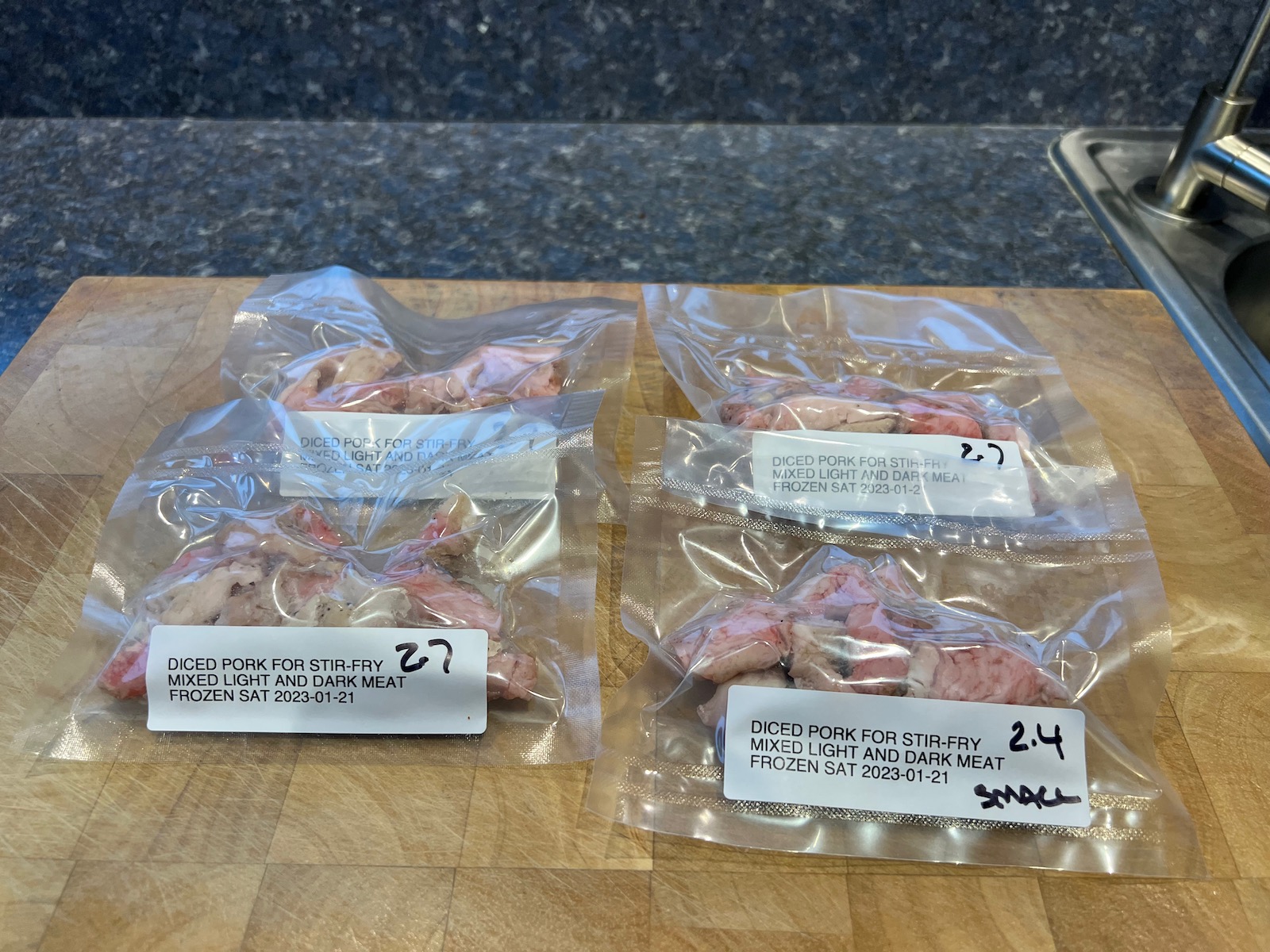Tonkatsu
 Tonkatsu (豚カツ), Japanese breaded, deep fried pork cutlet, is one of my favorite dishes. It's kind of like Wiener Schnitzel.
Tonkatsu (豚カツ), Japanese breaded, deep fried pork cutlet, is one of my favorite dishes. It's kind of like Wiener Schnitzel.
Start with a center cut pork roast, about 2.75 pounds. Remove the layer of fat and silverskin so you get a uniform, monolithic chunk of meat.
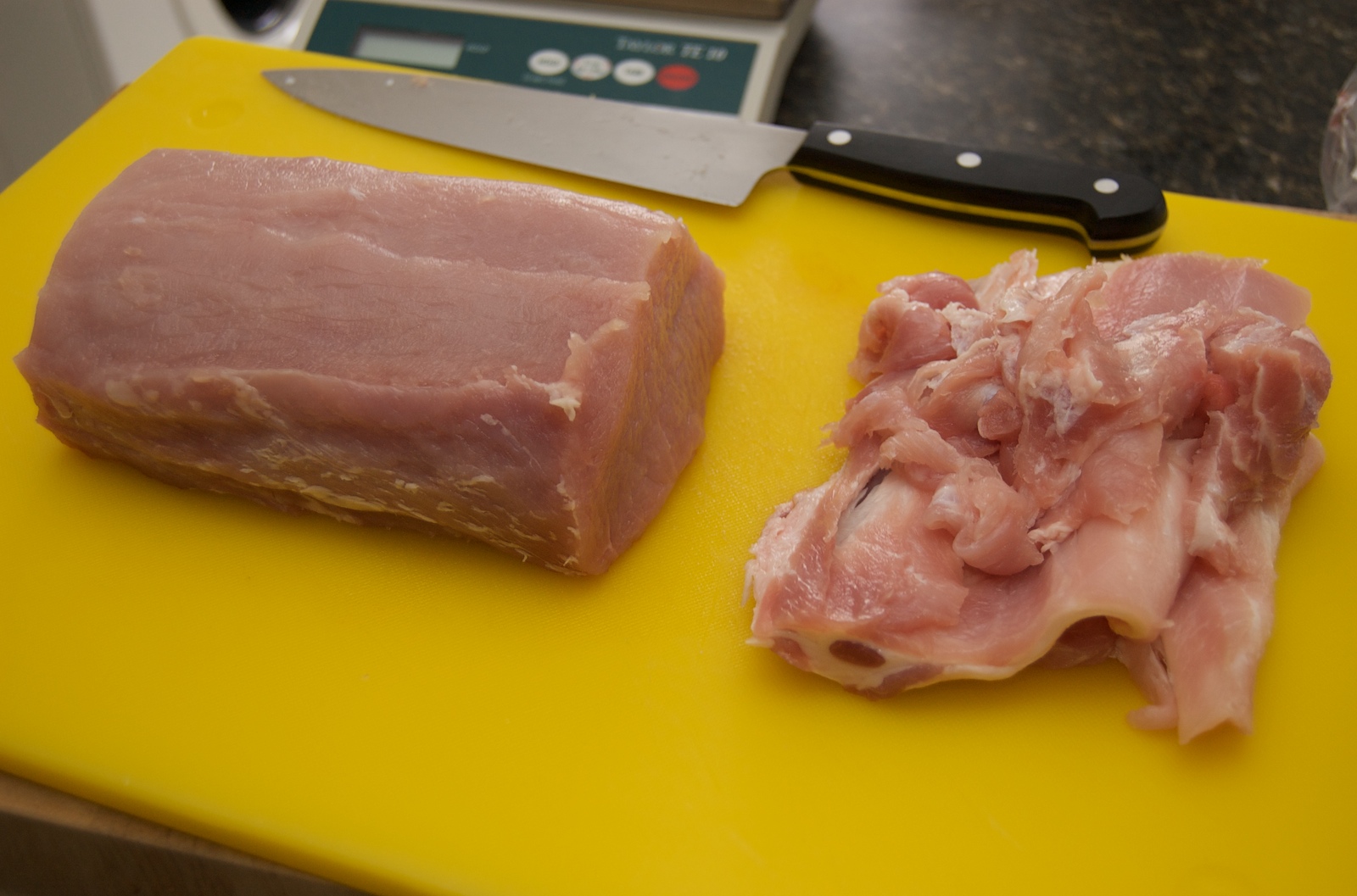 The easiest way to make the uniform thin slices is to freeze the roast for about 2 hours. Then make very thin slices - even thinner than what you get for "thin sliced boneless pork chops" at the grocery store.
The easiest way to make the uniform thin slices is to freeze the roast for about 2 hours. Then make very thin slices - even thinner than what you get for "thin sliced boneless pork chops" at the grocery store.
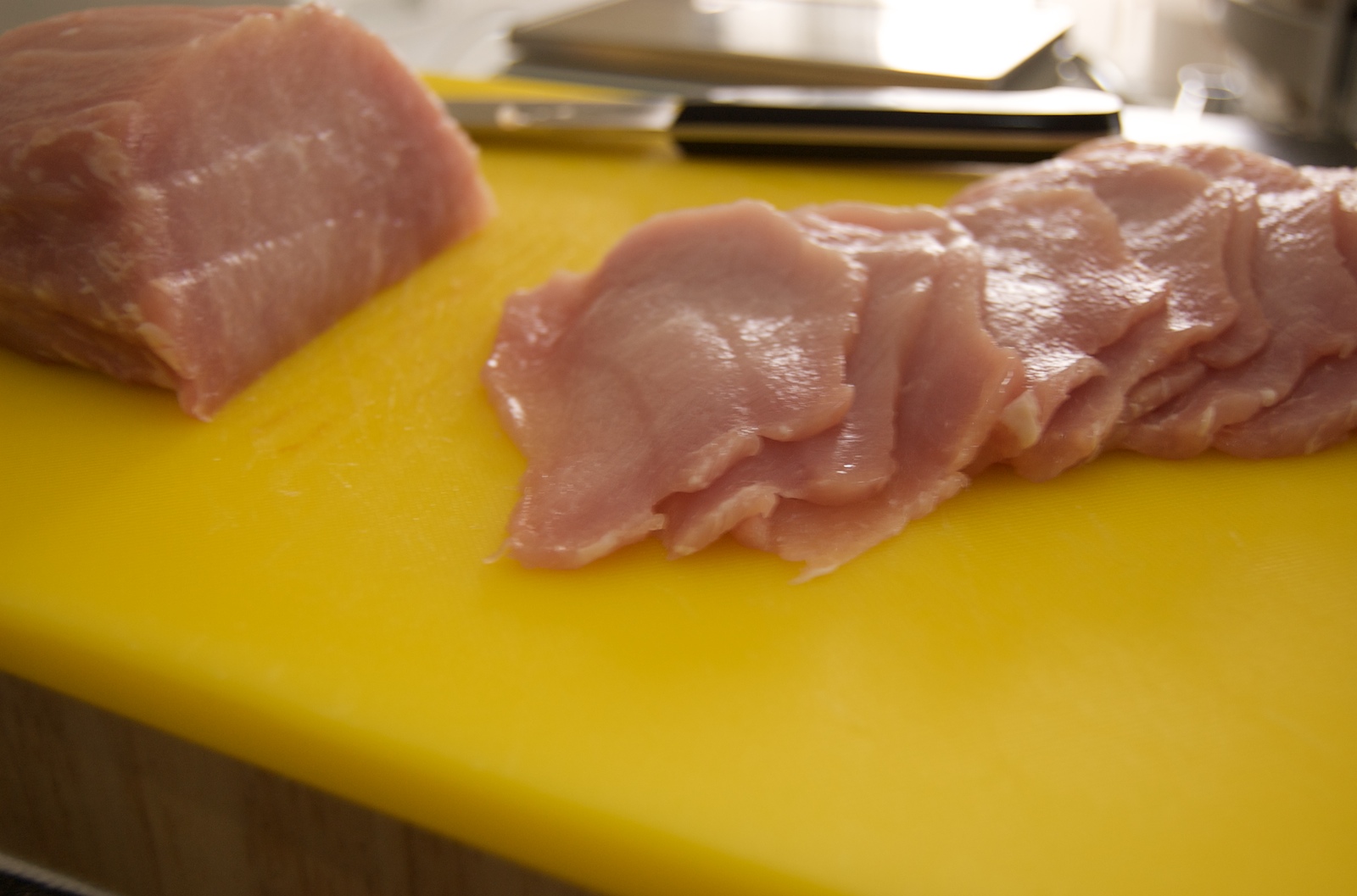 Season with salt, pepper, and garlic powder. Cover with plastic wrap and pound with a flat-faced mallet to make the slices even thinner.
Season with salt, pepper, and garlic powder. Cover with plastic wrap and pound with a flat-faced mallet to make the slices even thinner.
Prepare a breading station with all-purpose flour, 3 eggs beaten with a little water, and panko breadcrumbs. The panko breadcrumbs really are necessary - definitely do not try to substitute regular grocery store breadcrumbs. In a pinch, pounding a bunch of Ritz or Town House-type crackers isn't a bad substitution, however.
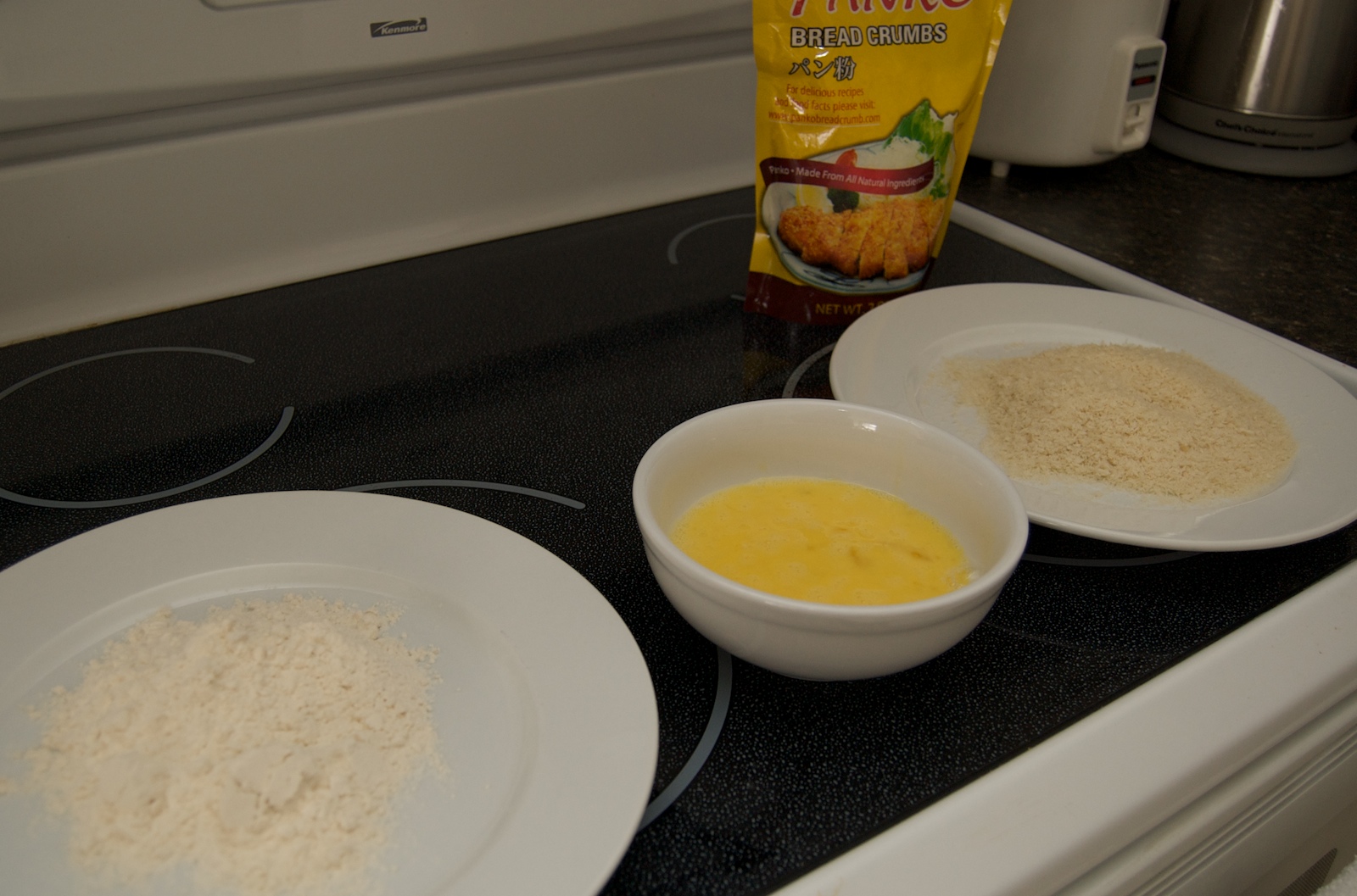 I find it works best to flour about 5 slices, then proceed with taking each slice and individually coating it completely in egg, then into the panko. Press the panko into the slice to make sure it sticks.
I find it works best to flour about 5 slices, then proceed with taking each slice and individually coating it completely in egg, then into the panko. Press the panko into the slice to make sure it sticks.
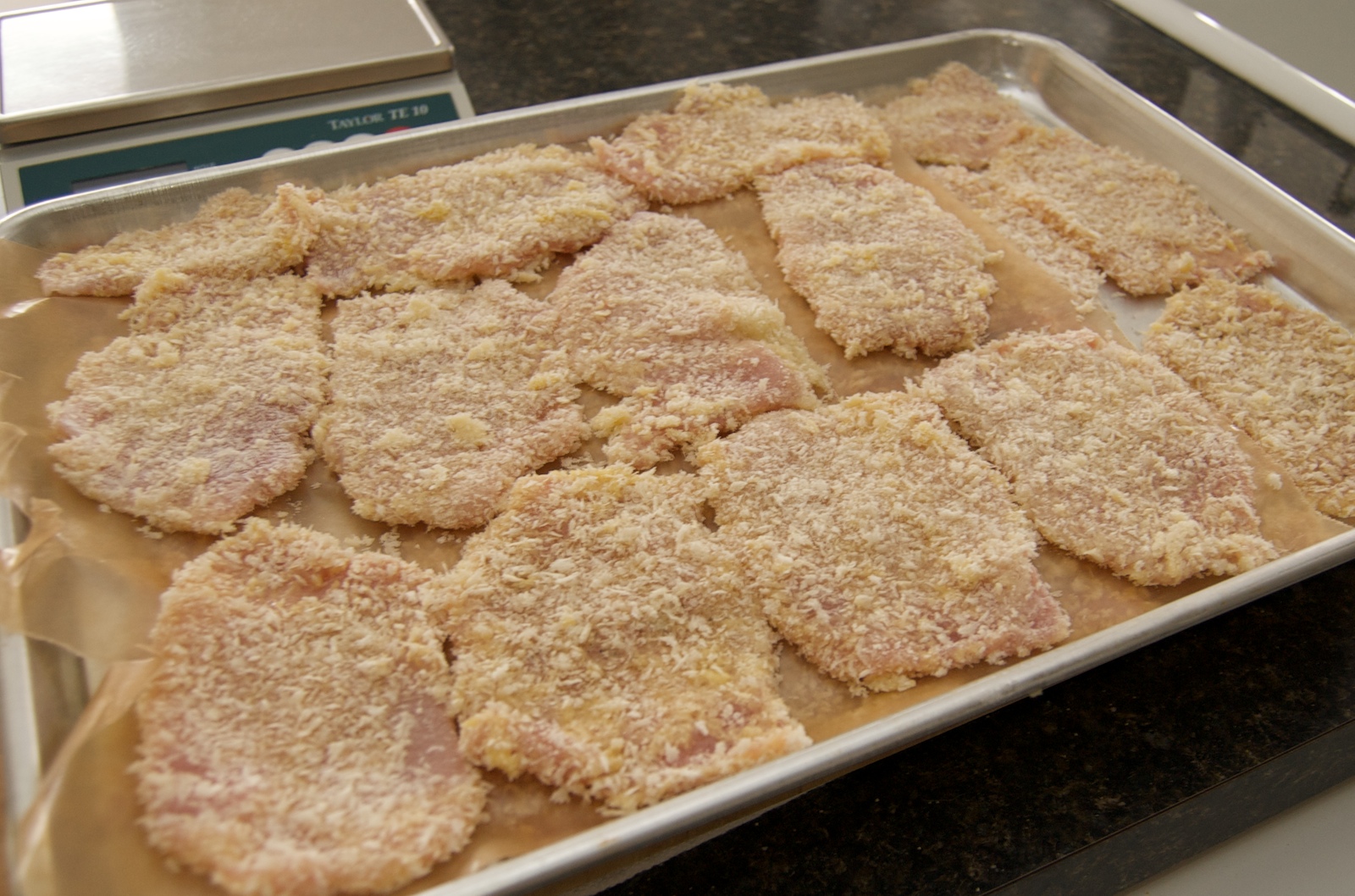 Deep fry for 2 minutes at 360°F. After one minute, flip over. Make sure the slices are not too crowded, and should not overlap. You'll probably have to make quite a few batches, but it's not so bad since they don't take long to cook at all since they're so thin.
Deep fry for 2 minutes at 360°F. After one minute, flip over. Make sure the slices are not too crowded, and should not overlap. You'll probably have to make quite a few batches, but it's not so bad since they don't take long to cook at all since they're so thin.
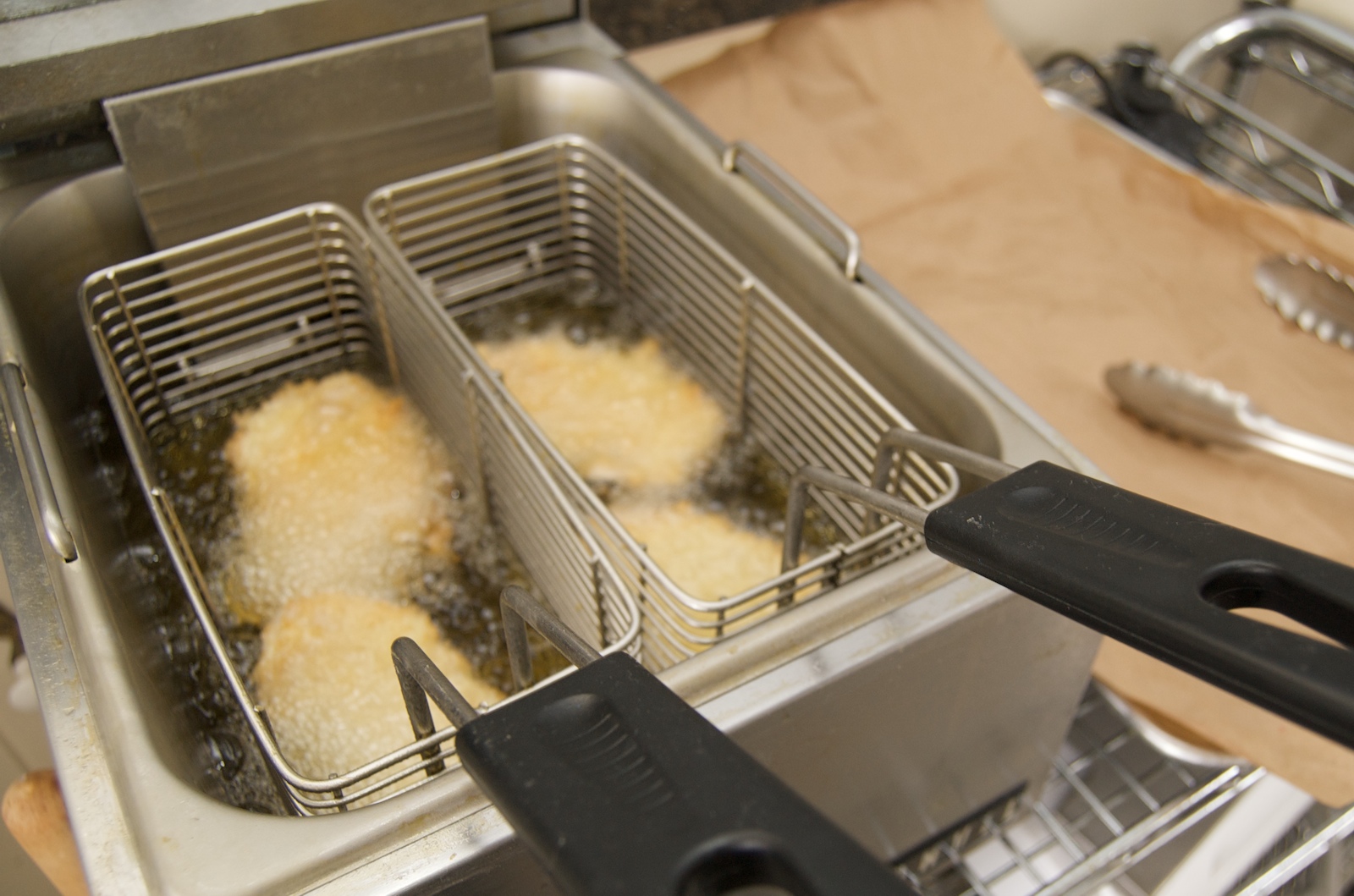 The completed tonkatsu. There was another partial sheet pan, as well.
The completed tonkatsu. There was another partial sheet pan, as well.
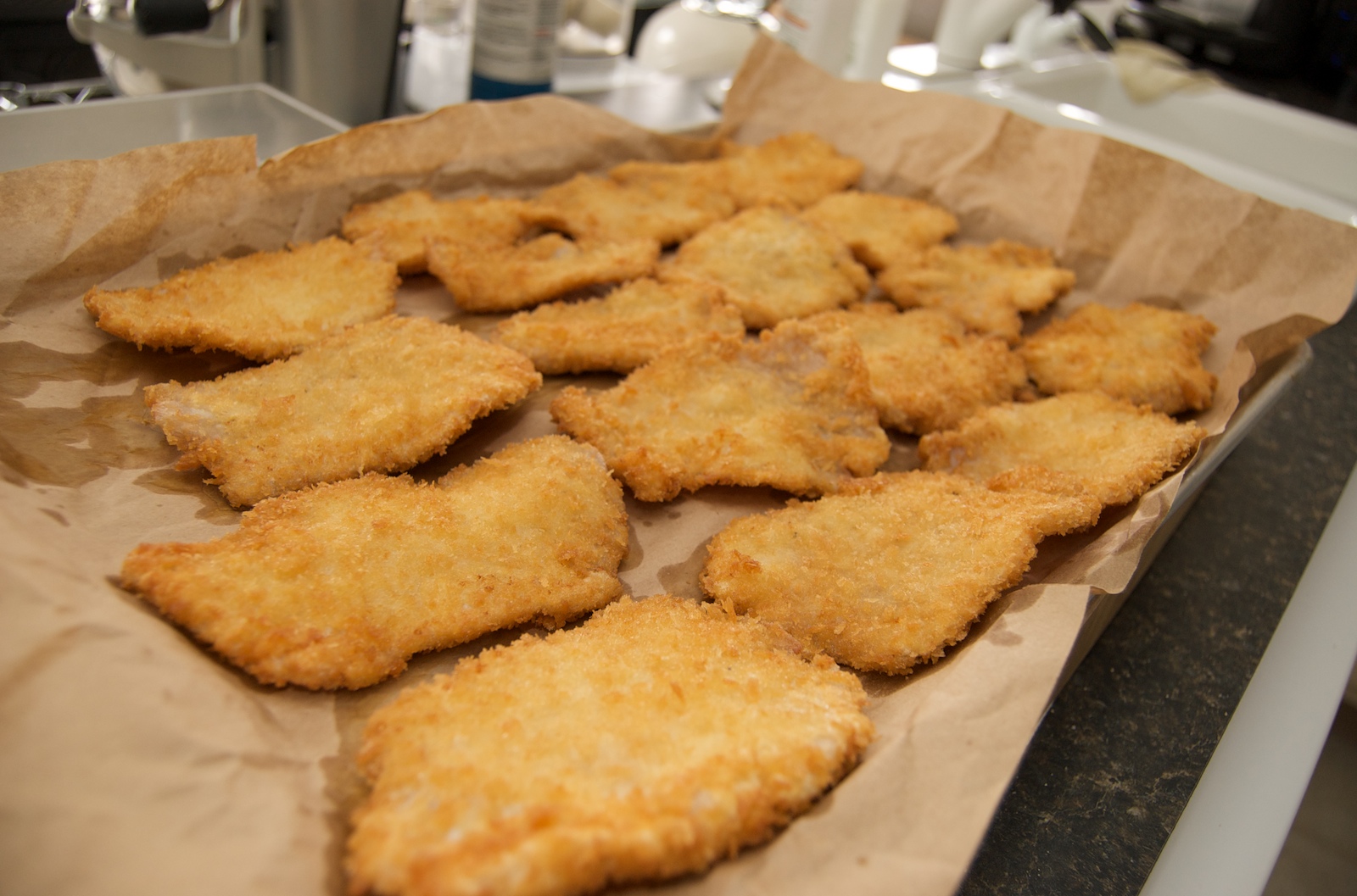 It's served with "tonkatsu sauce" which is a slightly sweet dipping sauce that can be purchased in Asian grocery stores. I like mine a little saltier so I mix regular soy sauce (shoyu) with tonkatsu sauce. You could even use plain soy sauce.
It's served with "tonkatsu sauce" which is a slightly sweet dipping sauce that can be purchased in Asian grocery stores. I like mine a little saltier so I mix regular soy sauce (shoyu) with tonkatsu sauce. You could even use plain soy sauce.
Tonkatsu freezes well in a ziplock bag or a plastic container. Just make sure you reheat in an oven, or even a toaster oven, not the microwave. I heat it on a lightly greased sheet pan in the oven for 12 minutes at 350°F.
There are apparently regional and even family differences in the preparation of this dish. In particular, my family's version uses very thinly sliced pork, though there are some preparations with cuts from 1 to 2 cm thick.
There are also other katsu - including versions make with chicken, minced meat, ham, and beef. I've never had ham katsu, but I like saying "hamu katsu."
There's another post of the tonkatsu reheated .
Update5/17/2012: Here's a nicer plating:
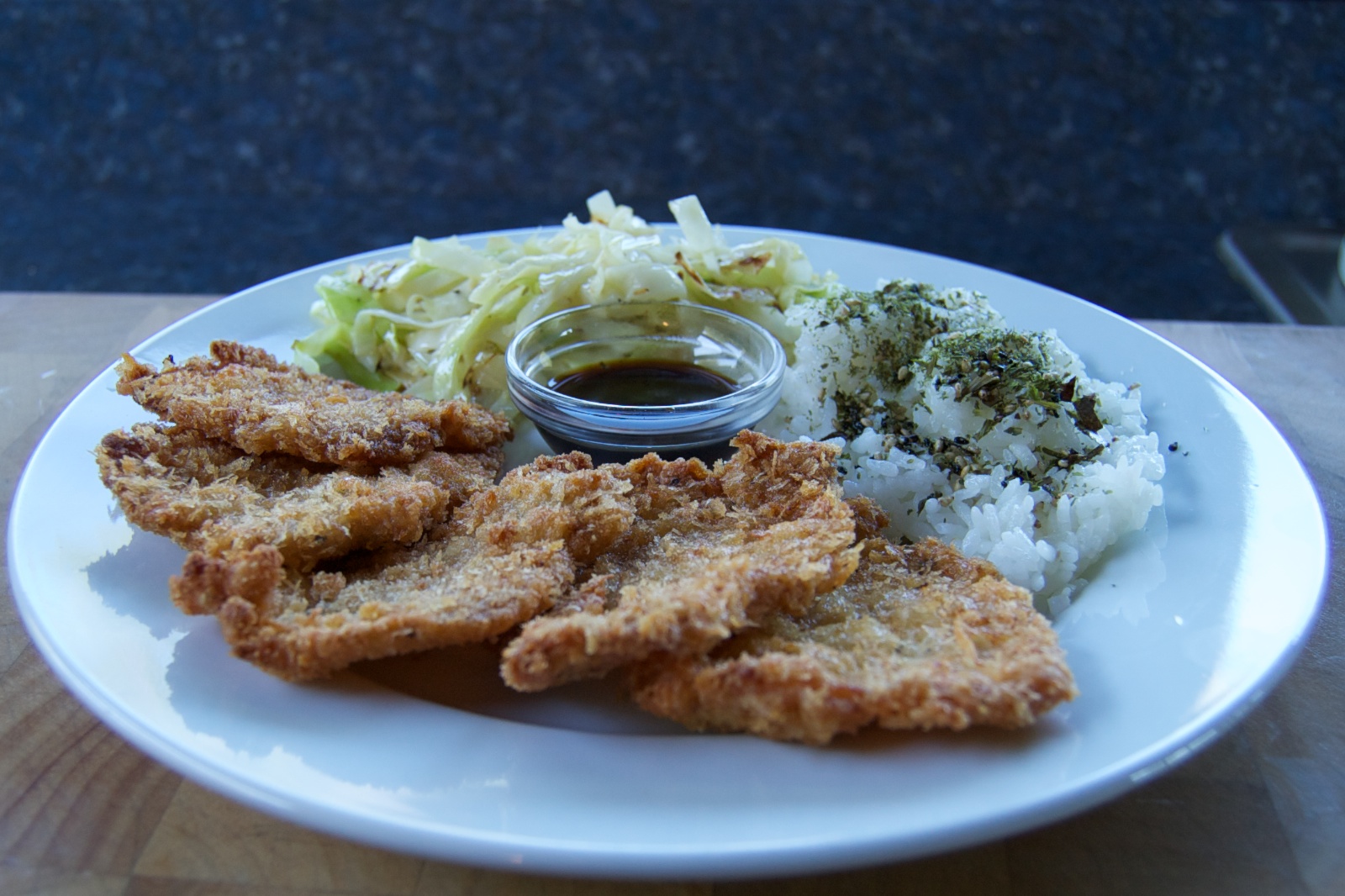
Update1/27/2014: Instead of using the big deep fryer, I used a sauté pan on my induction hot plate at 360°F. It worked really well for smaller batches!
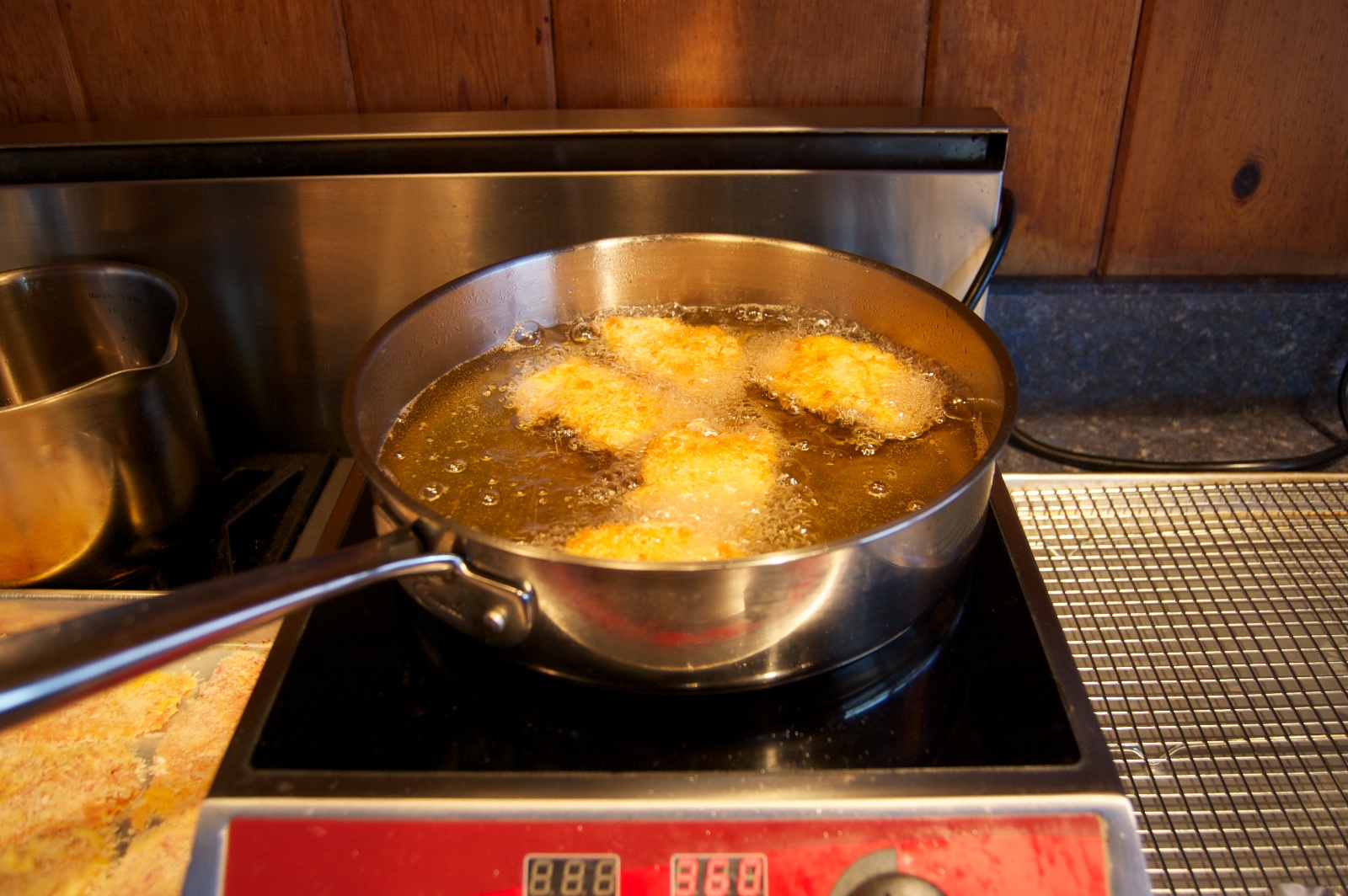
2023-01-21
The preparation is the same, but here are some more recent pictures.
I started with this 1.65 lb. boneless chef's prime roast.
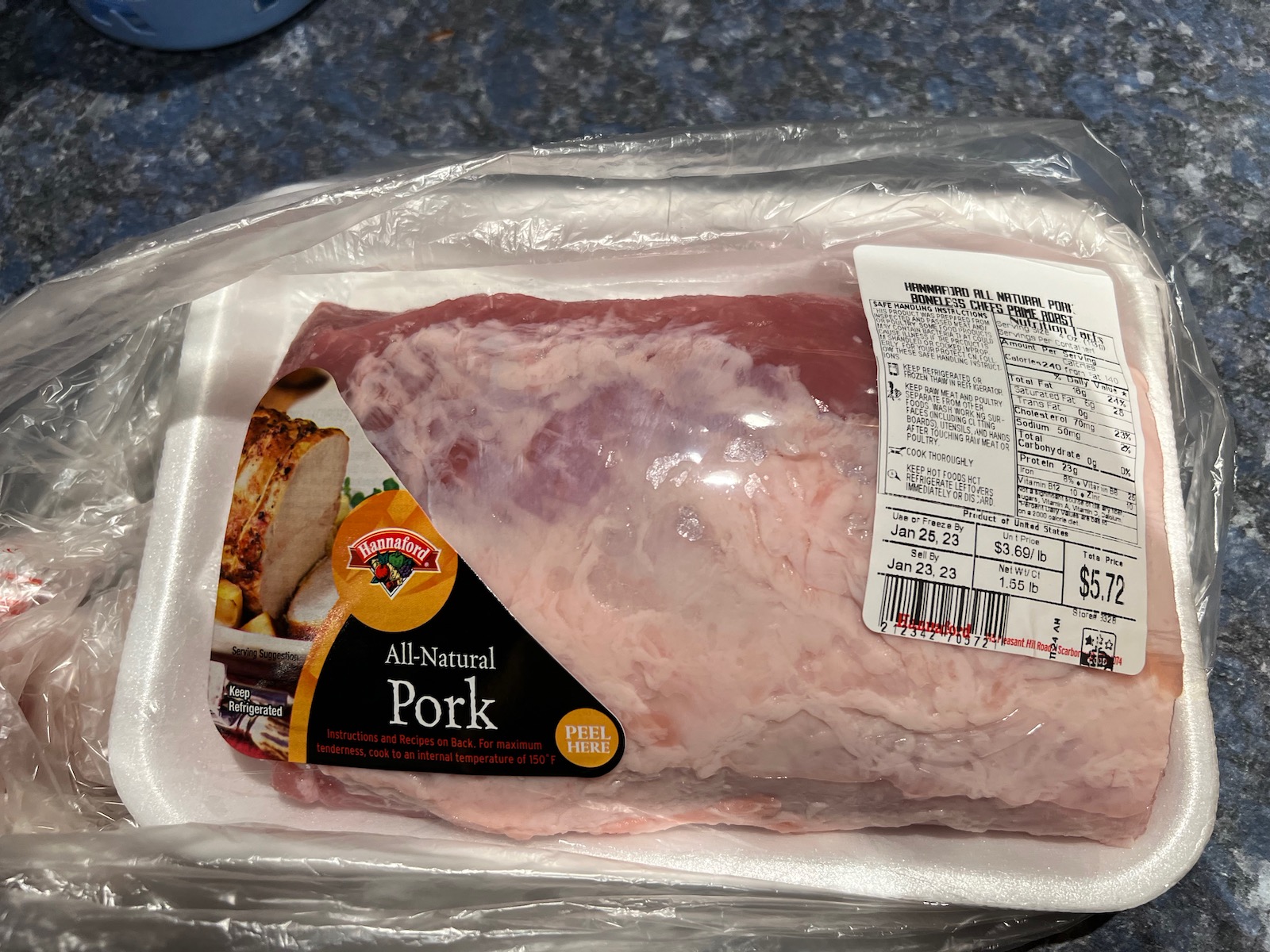
This makes two parts, the white meat part for tonkatsu and the dark meat part, which I sous vide for stir-fry meals.

Thinly sliced, and the rest for the sous vide. Lightly pound the tonkatsu, season with garlic powder and freshly ground pepper.
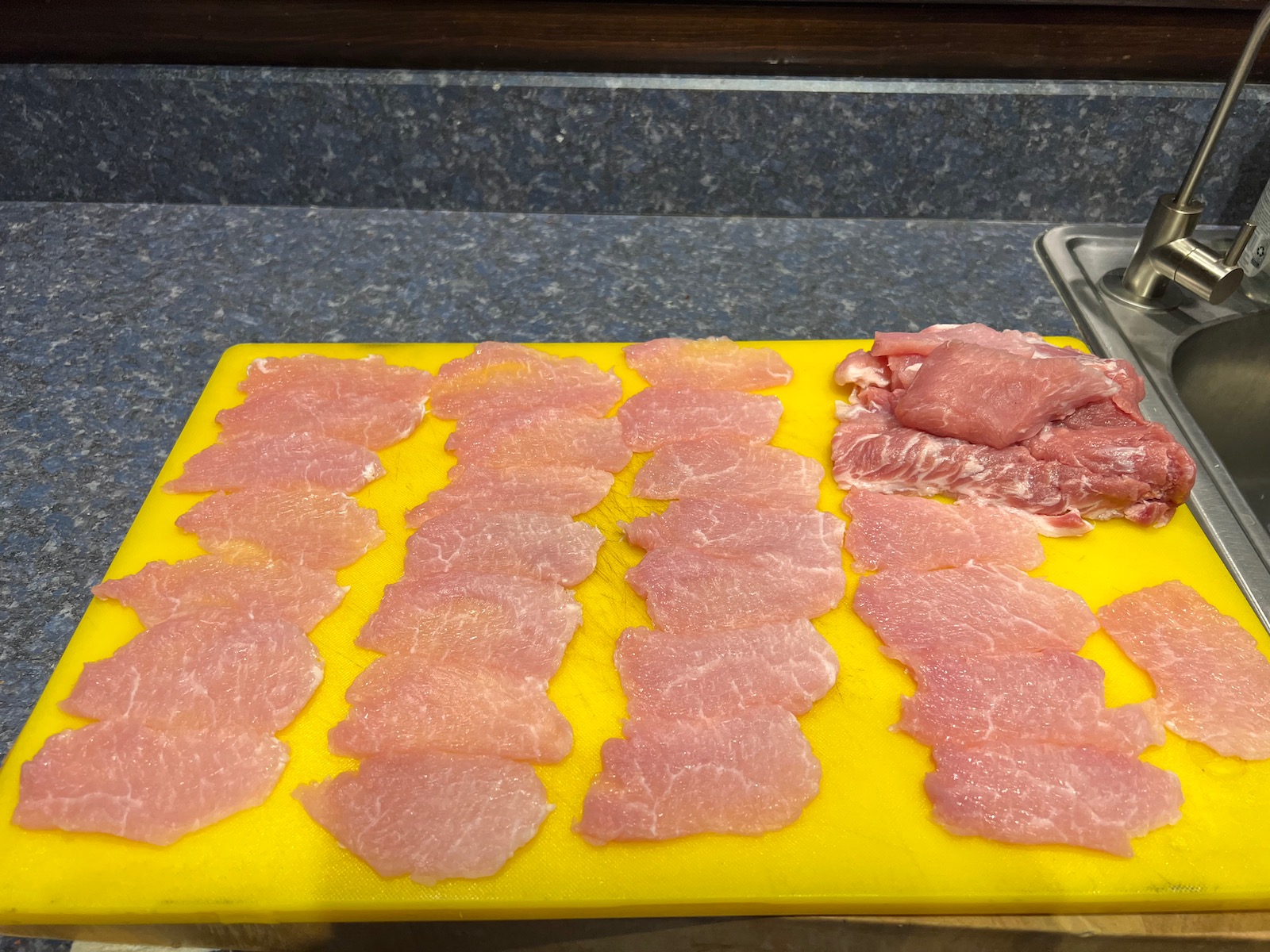
Ready to bread. Dredge in flour, egg, and panko crumbs.
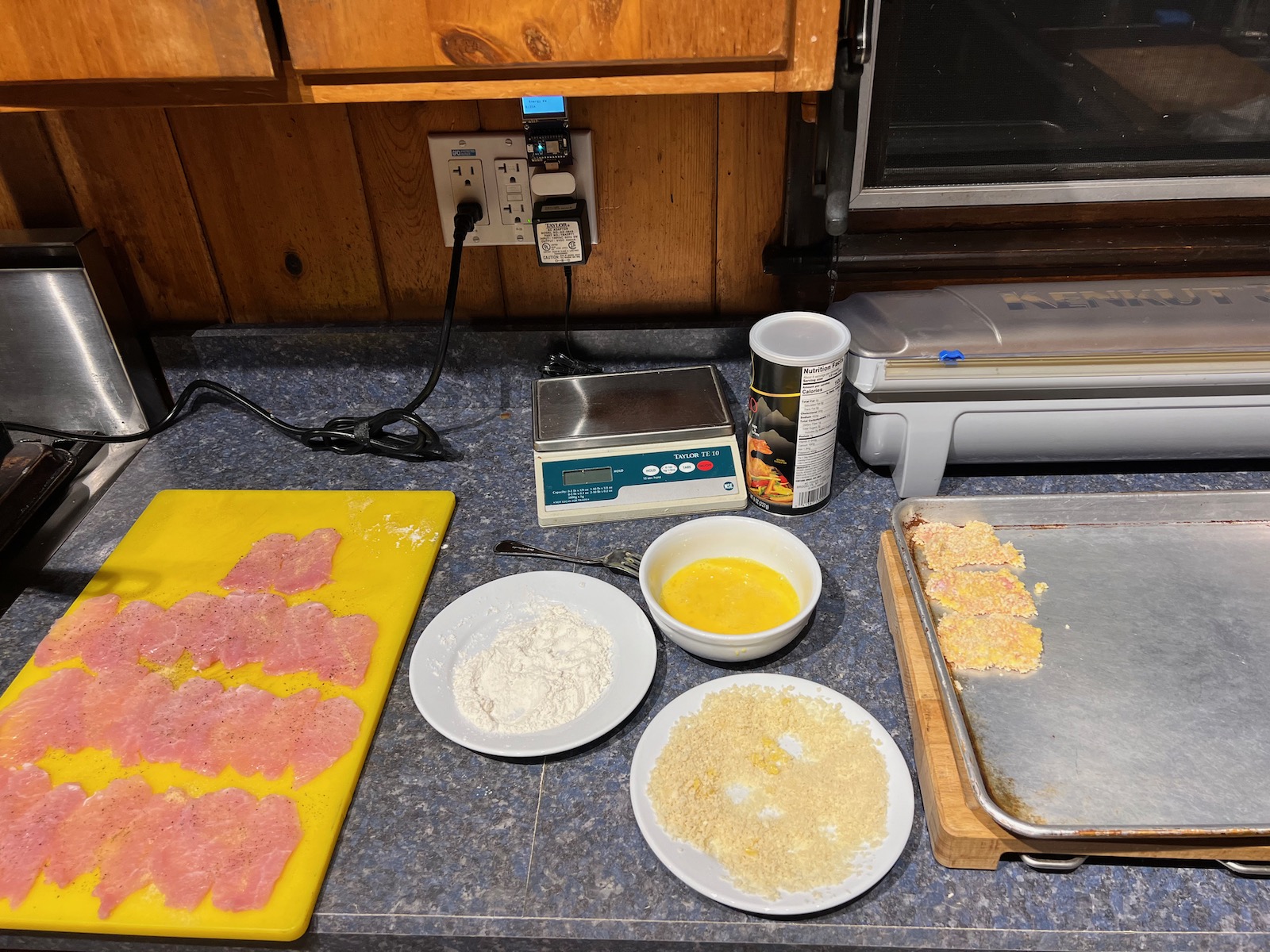
All breaded.
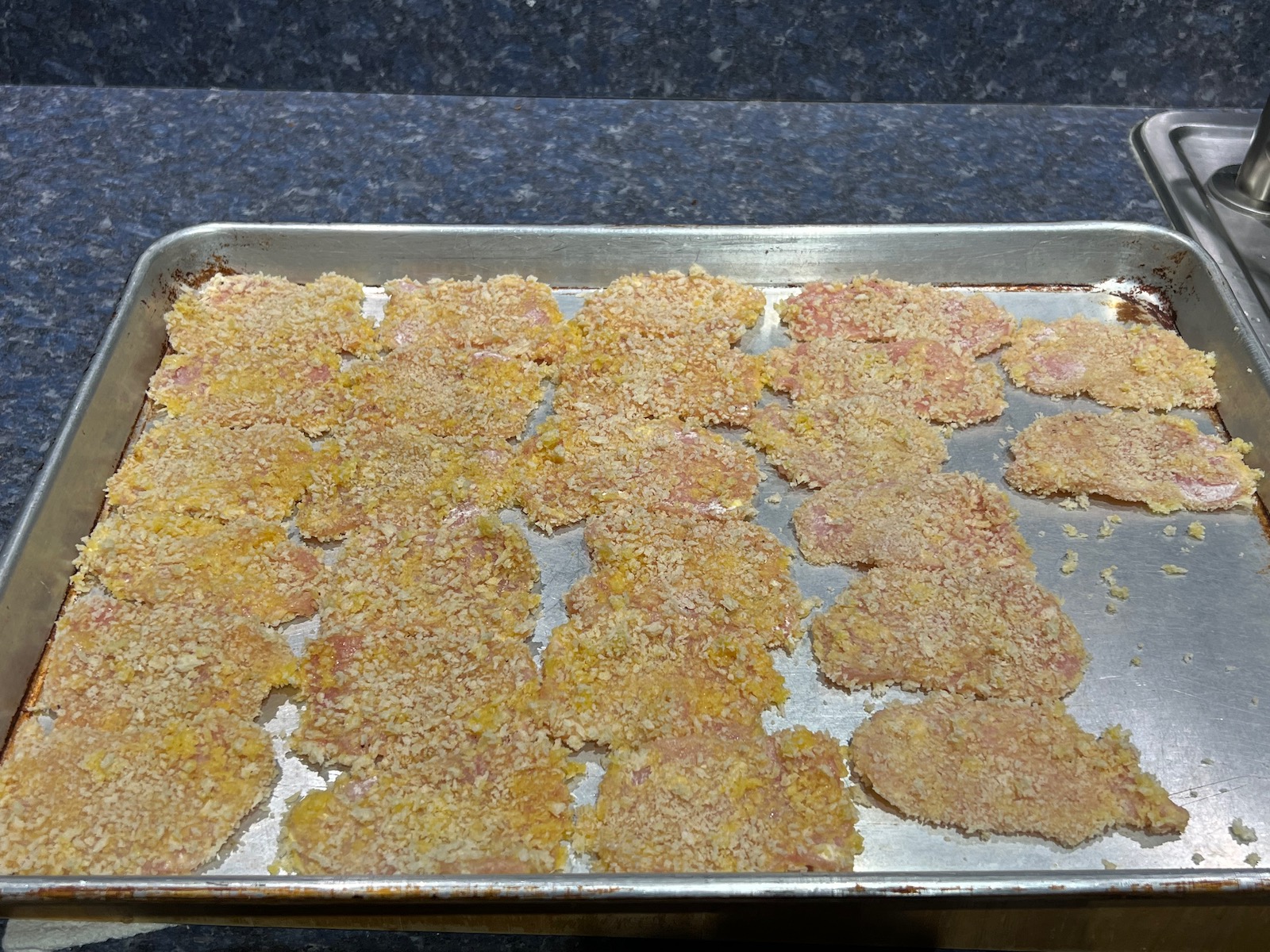
I still use a sauté pan on the induction hot plate for frying. There's a quart of oil in the pan.
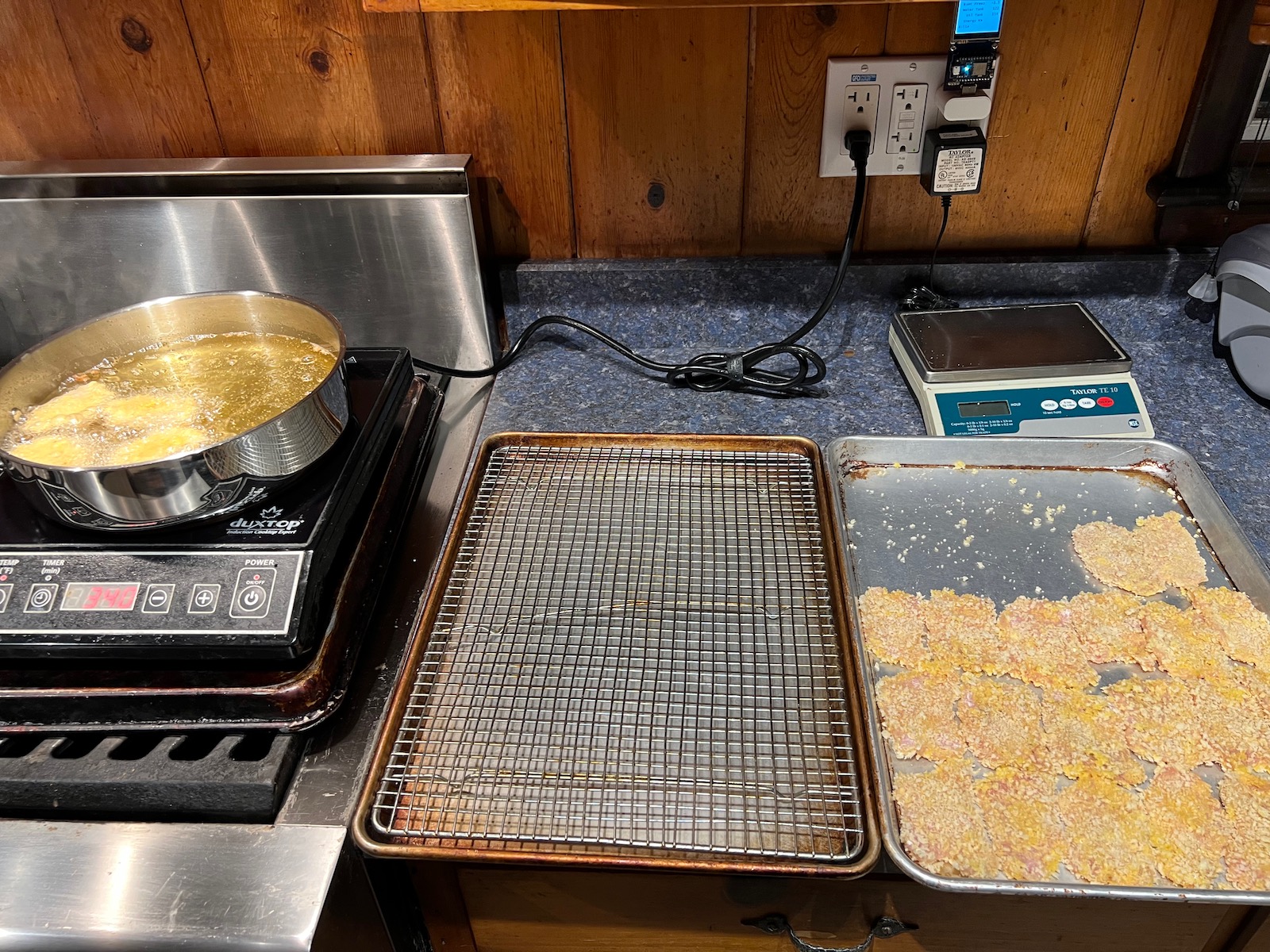
All done! I'll keep one serving for today, and freeze the rest.

Filtering the oil to save for more deep frying.
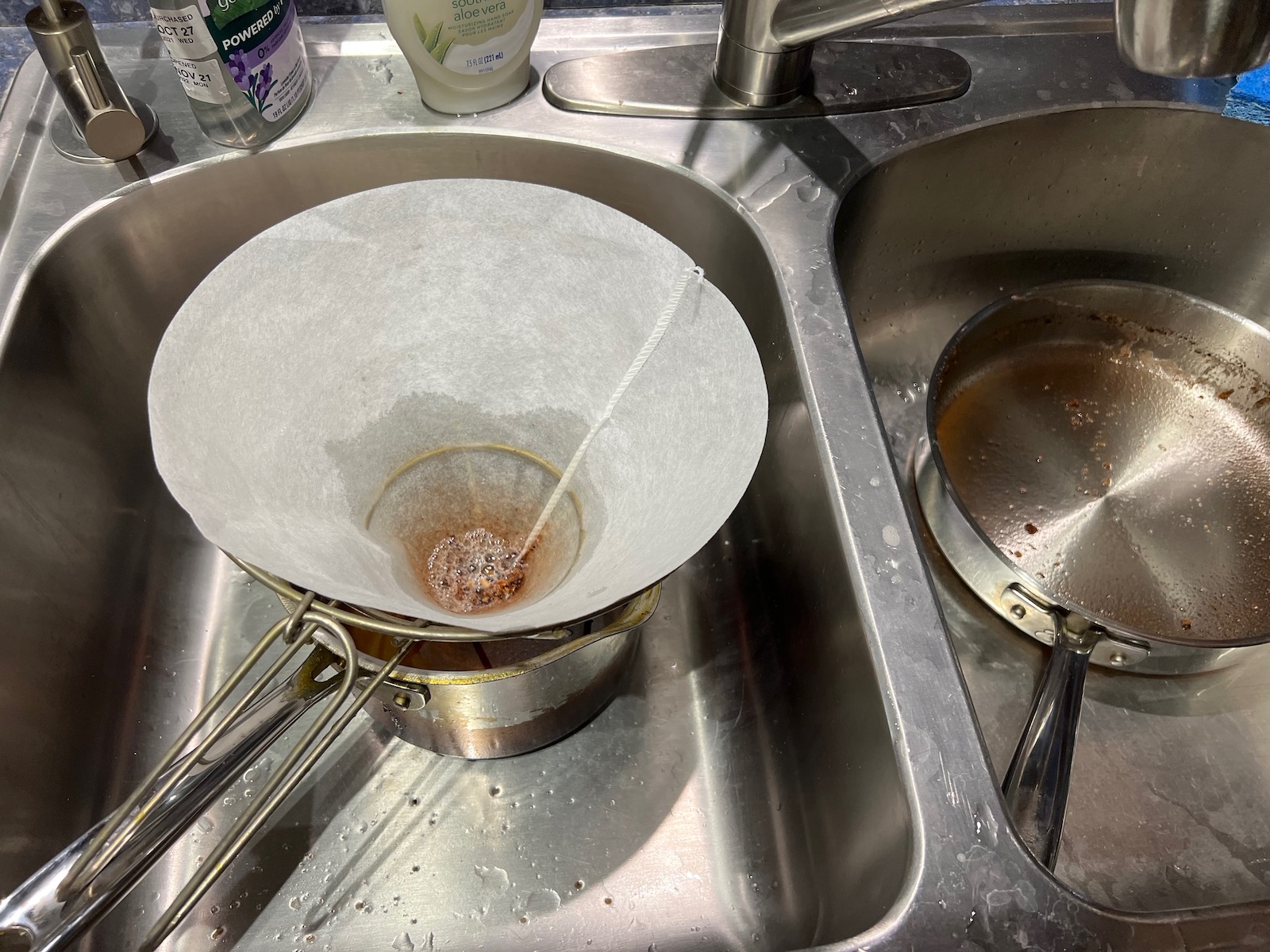
Packaged for freezing.
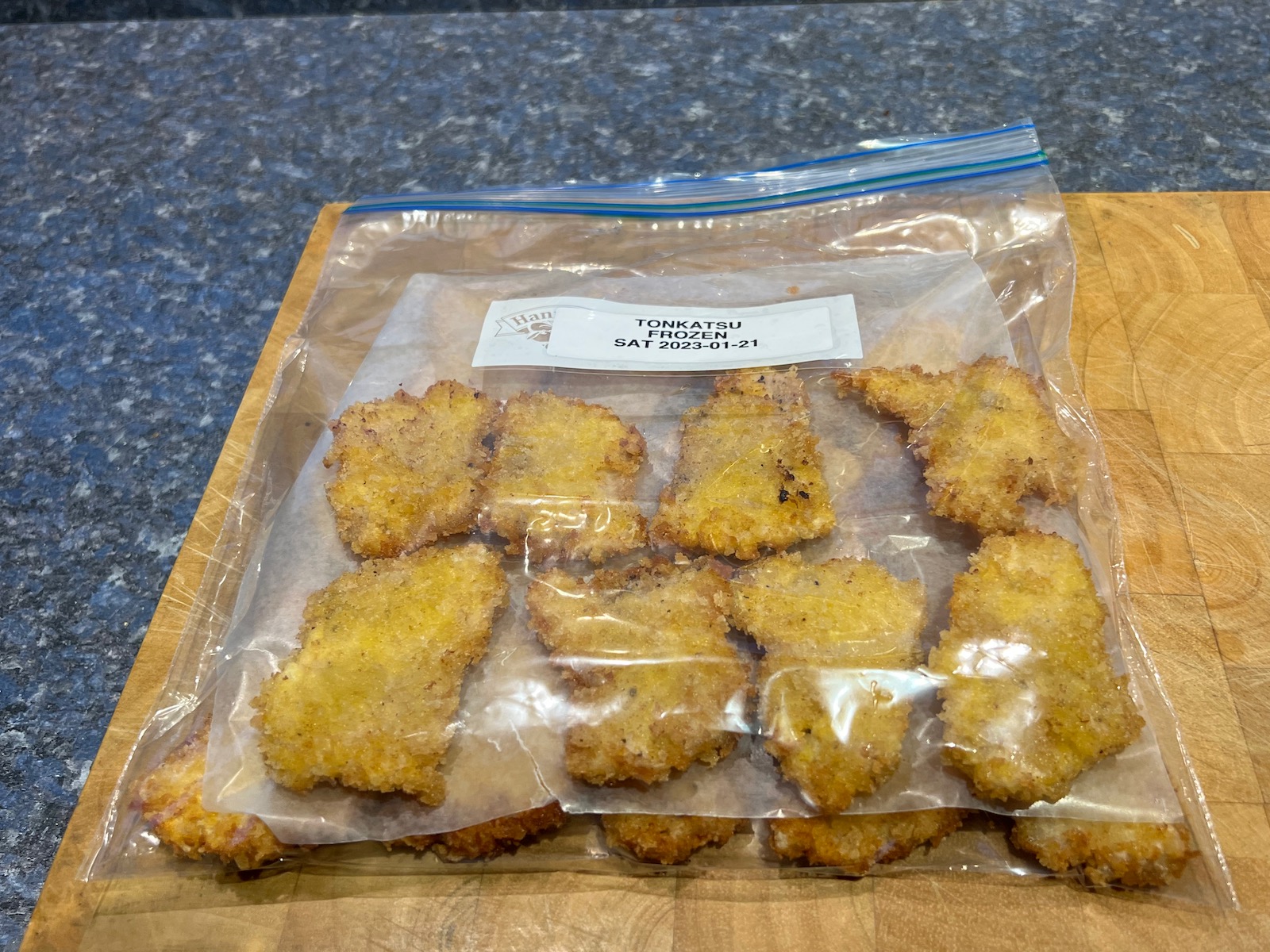
The rest of the roast after cooking in the sous vide (60 minutes at 155°F), cooling, dicing, and vacuum sealing.
